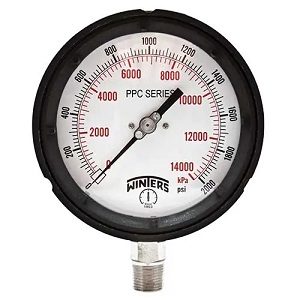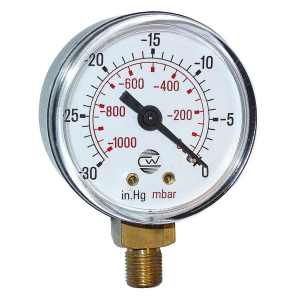Gauges
All Categories for Gauges

Pressure Gauges

Vacuum Gauges

Isolators

Temperature Gauges
Speak to a Rubber Line Specialist Today
Shop now for high-quality gauges from Rubberline Products Ltd. Choose from our selection of pressure gauges, vacuum gauges, isolators, and temperature gauges to find the perfect solution for your needs. With our extensive inventory and expert support, we are committed to providing you with the best products and service. Contact us or visit our website to place your order today.
- Guelph
- Cambridge
- Kitchener
- Mississauga
- Brantford
Frequently Asked Questions
What is the difference between pressure gauges and vacuum gauges?
Pressure gauges measure the pressure of a fluid or gas relative to atmospheric pressure, while vacuum gauges measure pressures below atmospheric pressure.
How accurate are pressure gauges and vacuum gauges?
The accuracy of a gauge depends on several factors, including the type of gauge, the quality of the materials and manufacturing process, and the conditions in which it is used. Higher-quality gauges with tighter tolerances will generally be more accurate.
How do I choose the right gauge for my application?
Consider the type of fluid or gas being measured, the pressure range required, the size and location of the gauge, and any specific features or functions needed for your application.
What is a gauge isolator and how does it work?
A gauge isolator is a device that protects gauges from pressure spikes and pulsations in the system being measured. It works by separating the gauge from the process fluid with a diaphragm or piston, allowing the gauge to respond to changes in pressure without being damaged.
What is the difference between a mechanical gauge and an electronic gauge?
Mechanical gauges use a physical mechanism, such as a bourdon tube or diaphragm, to measure pressure or vacuum. Electronic gauges use sensors and digital readouts to provide more precise and consistent measurements.
What is a temperature gauge and how does it work?
A temperature gauge measures the temperature of a fluid or gas. It works by using a bimetallic strip or other mechanism to convert changes in temperature into mechanical movement, which is then displayed on a dial or digital readout.
How do I calibrate a gauge?
Gauges can be calibrated using a reference gauge or a calibration standard. Follow the manufacturer’s instructions for your specific gauge and use the appropriate tools and procedures to ensure accurate calibration.
What is the operating range of a gauge?
The operating range of a gauge refers to the range of pressures or temperatures that the gauge can accurately measure. Consult the manufacturer’s specifications to determine the operating range of your gauge.

